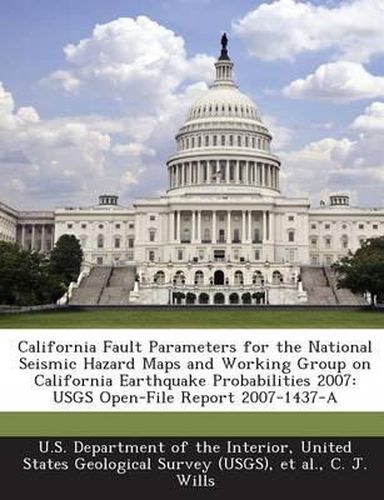Readings Newsletter
Become a Readings Member to make your shopping experience even easier.
Sign in or sign up for free!
You’re not far away from qualifying for FREE standard shipping within Australia
You’ve qualified for FREE standard shipping within Australia
The cart is loading…






This report describes development of fault parameters for the 2007 update of the National Seismic Hazard Maps and the Working Group on California Earthquake Probabilities (WGCEP, 2007). These reference parameters are contained within a database intended to be a source of values for use by scientists interested in producing either seismic hazard or deformation models to better understand the current seismic hazards in California. These parameters include descriptions of the geometry and rates of movements of faults throughout the state. These values are intended to provide a starting point for development of more sophisticated deformation models which include known rates of movement on faults as well as geodetic measurements of crustal movement and the rates of movements of the tectonic plates. The values will be used in developing the next generation of the time-independent National Seismic Hazard Maps, and the time-dependant seismic hazard calculations being developed for the WGCEP. Due to the multiple uses of this information, development of these parameters has been coordinated between USGS, CGS and SCEC. SCEC provided the database development and editing tools, in consultation with USGS, Golden. This database has been implemented in Oracle and supports electronic access (e.g., for on-the-fly access). A GUI-based application has also been developed to aid in populating the database. Both the continually updated ‘living’ version of this database, as well as any locked-down official releases (e.g., used in a published model for calculating earthquake probabilities or seismic shaking hazards) are part of the USGS Quaternary Fault and Fold Database http: //earthquake.usgs.gov/regional/qfaults/ . CGS has been primarily responsible for updating and editing of the fault parameters, with extensive input from USGS and SCEC scientists
$9.00 standard shipping within Australia
FREE standard shipping within Australia for orders over $100.00
Express & International shipping calculated at checkout
This report describes development of fault parameters for the 2007 update of the National Seismic Hazard Maps and the Working Group on California Earthquake Probabilities (WGCEP, 2007). These reference parameters are contained within a database intended to be a source of values for use by scientists interested in producing either seismic hazard or deformation models to better understand the current seismic hazards in California. These parameters include descriptions of the geometry and rates of movements of faults throughout the state. These values are intended to provide a starting point for development of more sophisticated deformation models which include known rates of movement on faults as well as geodetic measurements of crustal movement and the rates of movements of the tectonic plates. The values will be used in developing the next generation of the time-independent National Seismic Hazard Maps, and the time-dependant seismic hazard calculations being developed for the WGCEP. Due to the multiple uses of this information, development of these parameters has been coordinated between USGS, CGS and SCEC. SCEC provided the database development and editing tools, in consultation with USGS, Golden. This database has been implemented in Oracle and supports electronic access (e.g., for on-the-fly access). A GUI-based application has also been developed to aid in populating the database. Both the continually updated ‘living’ version of this database, as well as any locked-down official releases (e.g., used in a published model for calculating earthquake probabilities or seismic shaking hazards) are part of the USGS Quaternary Fault and Fold Database http: //earthquake.usgs.gov/regional/qfaults/ . CGS has been primarily responsible for updating and editing of the fault parameters, with extensive input from USGS and SCEC scientists